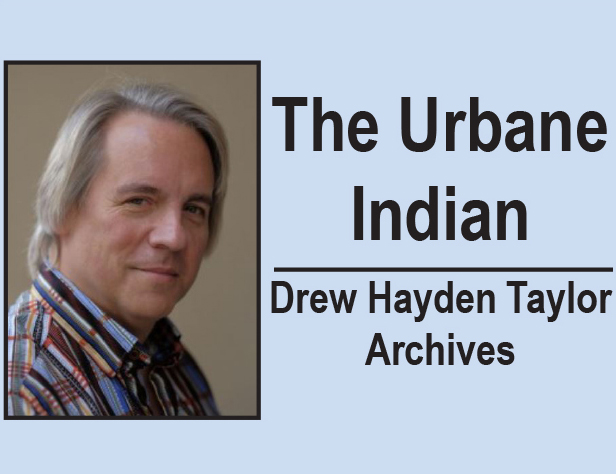
By Drew Hayden Taylor
Original published in December 2014
Once again, an august row of educated, privileged White men and women are sitting in judgement on the fate of Canada’s Native people. I am talking about the Supreme Court of this country. The question being debated: Should a row of educated, privileged White men and women sit in judgement on the fate of Canada’s Native people?
Recently, the conviction of an Aboriginal man for manslaughter was tossed out of the Canadian legal canoe and sank into the deep waters of the jurisprudence river, because his lawyer successfully argued the jury that convicted him was not of his peers, i.e. no on-reserve Indigenous people. This violated Clifford Kokopenace’s right to a fair trial.
Now it’s up to the chief justice (note the irony of that title and this issue) and her black robes to decide if the provinces, Ontario in this case, should be forced to use “reasonable efforts” to ensure its jury rolls are accurate and proportionate to the ethnicity of the population. Good luck.
Yes, I am aware that a jury representing a proper demographic of this country would, more than likely, contain the odd Asian or African-Canadian face, but it still seems that after all these years, it’s still the People of Palour/Colour-Challenged who decide the vast majority of these important issues. And as we all know, First Nations people have done so well under their wise and benevolent rule.
On the face of it, the concept seems like a good idea. It’s no secret that something is amiss out there when it comes to Native people and the court system. Proportionately, First Nations make up four per cent of the overall population, but an astounding 23 per cent of the Federal prison population. And this says nothing of the two years-less-a-day residents in provincial jails. Anybody who’s taken Grade 11 math knows that’s not a good ratio. The long arm of the law, too frequently, is seen as putting a choke hold on the throats of this country’s original inhabitants.
Entire libraries have been written on why we are over-represented. Most agree this is the repercussions of a cultural PCSD – post-contact stress disorder. When you’ve lived through 500 years of colonization which included the scoop up, residential schools, the Indian Act and other assorted treats, there is bound to be some social rebellion and acting out.
Simply put, when you feel you’ve been abused by society, you tend to want to abuse society right back. Not that the larger Native population are by any means condoning any illegal or unlawful act. Trust me, the majority of Native people in this country are good people. They want good government and law and order. It’s just that so frequently, we get so little of it.
Witness those missing or murdered 1,200 Native women that Prime Minister Stephen Harper classifies as simply a crime, not a social issue. That could be a good rationale for why there are so many Native people in prison. At least there, they know what the real score is, not political rhetoric.
But back to the point. Here are more statistics to decode: According to the Aboriginal Affairs and Northern Development Canada website, there are approximately 700,000 status/registered Native people in Canada. And just over 45 per cent of those live on reserve. So that leaves around 300,000. It’s generally accepted that around 50 per cent of that population is under 25. And if you remember the 23 per cent of the prison population at any given time, I believe those that have served time in prison cannot sit on a jury which further whittles away at that target jury population.
Add to that those that live on isolated reserves, that leave us with, give or take, 17 people, three of whom spend most of the winter with the Seminoles in Florida – the tribe, not the football team.
That puts an awful lot of strain on the rest of those within that target group. This could conceivably turn into a full-time job. Personally, I think this could be one of those sneaky make works projects to combat the rampant on-reserve unemployment rate, except there are no honorariums involved. Usually you have to pay your own transportation and parking.
Another problem with adding more Aboriginal people to the jury pool, I believe, is that Native people don’t differ that much from the rest of Canadians. Sitting on a jury is not exactly high on our list of things to do. Its priority or interest in our lives probably sits only second to attending a residential school or participating in one of those long starlight winter walks that used to be so popular in Saskatoon.
And truthfully, if I was a defendant looking across a courtroom at 12 people ready to pass judgement on me, I am not sure I would feel all that comfortable looking at a jury of my cultural and ethnological peers because Native people, I think I can safely say, dislike and find excessive fault with murderers, rapists, thieves and people making illegal left hand turns as any other people in Canada. And with the issue of those missing or murdered 1,200 Aboriginal women still hanging over this country’s head, possibly more so.
So, I would probably feel more at ease if my jury consisted of 12 left leaning, socially conscious White people, carrying a certain amount of collective social guilt.
I mean, who wouldn’t?
